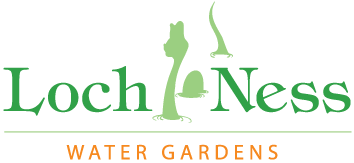Well, Spring is finally here in much of the country, and that’s the most exciting time of the year for many pond owners. I know that I get hugely stoked to see the first leader pads from a lotus, the first few buds of the lilies. Less exciting is the annual spring algae bloom that many ponds experience. Algae blooms mean pea-green pond water, and that’s no fun at all.
So, how do I deal with it?
Well, dealing with planktonic algae should usually be a multi-pronged approach. The first thing you should probably try to do is to choke off the nutrients that are feeding the green goop. Here are a few things that you can look at to see if an abundance of nutrients is your problem:
- Overfeeding fish: this is one of the biggest things that I see. Whenever you feed your fish (if you do at all), make sure that you’re only feeding them what they actually eat before it starts to sink or get sucked into your filtration system.
- Buildup of organic material in the pond: Do you use a good pond net to cover your pond in the fall? You should, but even if you do, you’ll still probably need to clean out excess leaves in late fall or early spring. This can also mean that your pond planters aren’t covered with sufficient gravel or stone to keep the dirt out of the water.
- Too many animals around the pond: The biggest culprit is birds. A flock of geese or ducks around your pond will pollute it with a lot of droppings, and that can throw your water balances way off. Also, having bird feeders too close to your pond means both droppings and stray birdseed in your pond. Also, if you have pets, make sure that wherever they eliminate their waste doesn’t drain into your pond. If it does, try to keep it as clean as possible.
- Too few plants: This isn’t a problem that I ever have, but if you don’t have enough plants to absorb the free nutrients in the water, that can cause problems.
- Not enough algae: This may seem counter-intuitive, but if you don’t have algae in your pond, it will never find the right balance to naturally keep itself clean. What you want is the nice layer of attached algae that accumulates naturally and coats the bottom of your pond and stream. This attached algae will use up lots of the free nutrients in your water, keeping it healthy and clear. This becomes a big problem when people over-clean the bottoms of their ponds, scraping or power-washing away the natural patina of algae that their ponds have developed.




